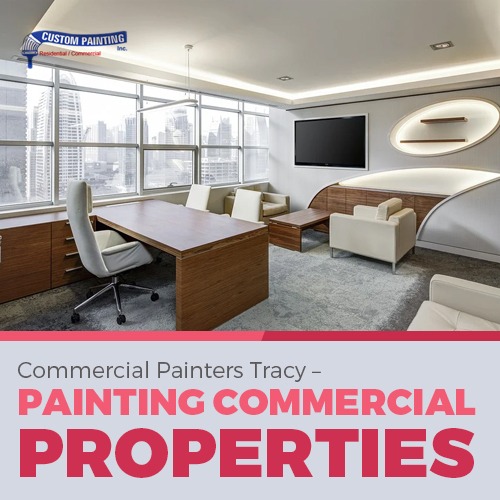While nearly everyone can hold a brush and paint, the work done by a DIY painter cannot be compared to the work done by professional commercial painters in Tracy. They have years of experience, use quality tools, and know various tips and tricks to do the job better.
Depending on the size and the structural complexity of the commercial space to be painted, and the size of the crew doing the job, painting a commercial property can take from days to weeks. It makes perfect sense to hire professionals to do the paint job as their skill is also seen as an investment in your business.
Aside from the factors earlier mentioned, these professionals follow a different path that enables them to provide better paint results. DIY painters cannot match a smooth paint job like professionals because they often miss essential painting steps.
Professional commercial paint contractors follow these three most important steps, the three Ps:
- Preparation
- Priming
- Painting
These three steps may sound like much but following them is an altogether different matter. It takes quality paints and tools and proper training to get all of these steps right.
- Preparation
- Clean the surface. Most walls can be washed using a sponge and warm water. Other solutions are used for surfaces exposed to soot, oil, and grime, such as commercial wall cleaners and detergents. As for old water stains, professionals usually spray the area with a stain killer.
- Lay drop cloths. Professional painters prefer canvas cloths. They quickly absorb paint that may get on them, and the paint does not bleed to the floor or surface that is covered. Professionals steer clear of plastic cover sheets because they can be hazardous if paint gets on them.
- Cover areas and fixtures (such as light bulbs) with tape or plastic to keep paint from getting on them.
- Priming
- Smooth any rough spots or bumps from a previous paint job with a sanding sponge. Sanding is an essential step to help the primer (and eventual topcoat) adhere better to the surface.
- Fill the holes, dents, or cracks with a painter putty or spackling compound. Let it dry and sand off the excess to maintain a smooth and even surface.
- Use caulk to seal the gaps between doors to provide a smooth, clean finish. Professionals usually use a caulk gun for more efficient sealing of gaps.
- Apply primer to help the topcoat bond better with the surface.
- Painting
- It’s better to use glossy paints for commercial establishments as they are stain-resistant and require less maintenance. They are especially ideal for painting high-traffic areas.
- Use a paint extender. It dries more slowly to allow more time to apply the next coat of paint without any unsightly gap marks.
- Use a nine-inch paint roller to paint the walls – it should be no shorter or longer than that. A roller that’s too short won’t enable you to cover more areas, while a roller that’s too long may be hard to handle and cause ugly stray lines due to an unsteady hand. You can also use a paintbrush to cut in the edges that a roller cannot reach.
Because of the unique challenges involved in painting commercial spaces, take time to choose the right painting contractor for the job. Experienced, licensed, and bonded commercial painters in Tracy can provide suggestions for the proper execution and implementation of the project so that the finished paint job can maximize the return on your investment.

